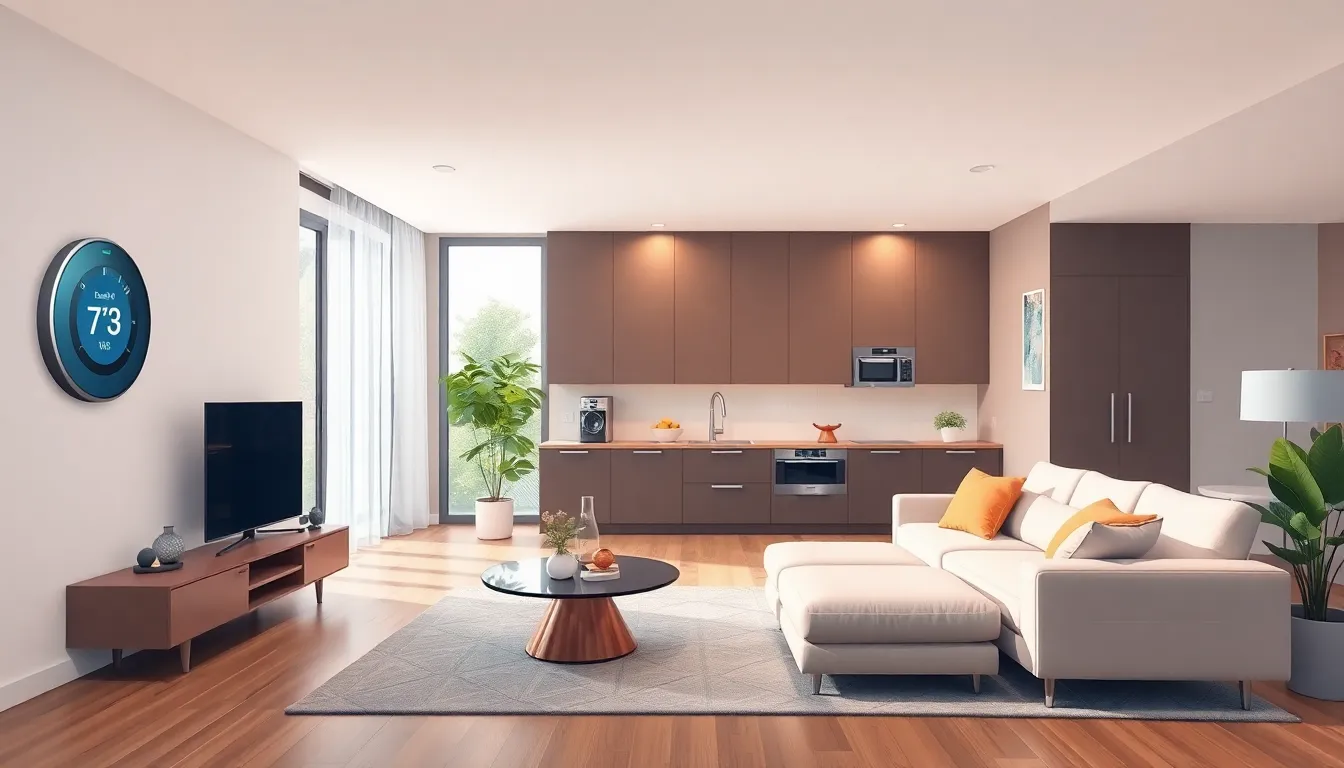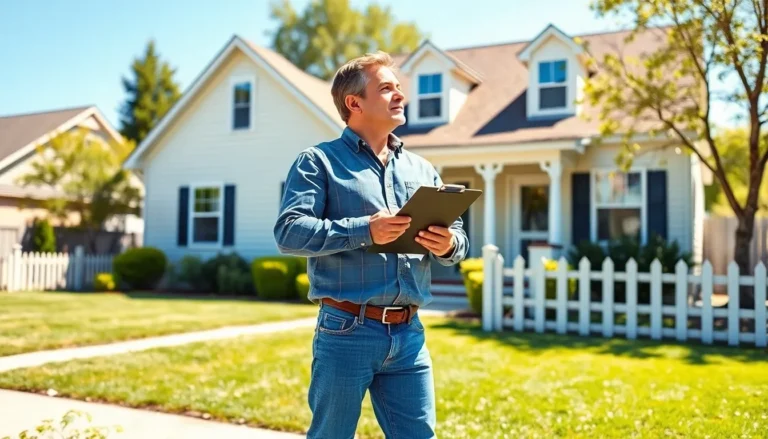The real estate landscape is shifting faster than a cat on a hot tin roof. With new technologies and changing buyer preferences, it’s not just about location, location, location anymore. Today’s market is a whirlwind of innovation, and those who stay ahead of the curve will reap the rewards.
Table of Contents
ToggleOverview of Emerging Trends in Real Estate
Recent developments in real estate showcase a shift towards technology-driven solutions. Smart home technology ranks high among buyer preferences, enhancing convenience and efficiency. Sustainable building practices draw more attention, reflecting a growing commitment to environmental responsibility. Remote work trends influence residential choices, as buyers seek larger spaces for home offices.
Demand for urban areas adapts, with many buyers favoring suburban properties that provide more space and affordability. Mixed-use developments gain momentum, blending residential, commercial, and retail spaces for vibrant community experiences. Virtual reality and augmented reality tools enhance property tours, enabling prospective buyers to visualize spaces effectively.
Investors increasingly gravitate towards proptech startups that offer innovative solutions, transforming traditional practices in real estate transactions. The importance of health and wellness in residential design emerges, with buyers looking for amenities that promote a healthier lifestyle. Data analytics empowers real estate agents, allowing them to provide tailored marketing strategies and insights.
Short-term rental markets experience fluctuations as regulations become stricter in various regions. Cryptocurrency transactions also gain traction, reflecting a broader acceptance of digital currencies in high-value real estate deals. As these trends evolve, stakeholders must remain agile, adapting to the shifting landscape of buyer preferences and technological advancements. These insights position industry professionals to leverage emerging trends effectively.
Technology Impact on Real Estate

New technologies significantly influence the real estate market, shaping buyer preferences and investment strategies. Innovation now stands at the forefront, driving changes that cater to emerging demands.
Smart Home Innovations
Smart home innovations redefine living experiences, appealing to tech-savvy buyers. Features like smart thermostats and automated security systems enhance convenience and energy efficiency. Buyers with an interest in sustainability increasingly seek homes equipped with energy-efficient appliances. Sensors for lighting and temperature optimization lower utility costs, attracting more interest. Moreover, integration with mobile devices fosters greater control over home environments, making these features a requirement rather than an option.
Virtual Reality in Property Viewing
Virtual reality in property viewing transforms how buyers explore listings. Immersive tours allow potential homeowners to experience spaces without physical visits, saving time and effort. These tools increase engagement by offering interactive experiences that traditional photos cannot match. For real estate agents, virtual reality tools improve marketing strategies by showcasing properties effectively. Additionally, buyers appreciate the ability to visualize changes in layout or design, making informed decisions with less pressure.
Sustainability in Real Estate
Sustainability has become a pivotal focus in real estate, influencing both development and buyer preferences. Stakeholders recognize the importance of eco-conscious practices.
Green Building Practices
Innovative green building practices are reshaping the landscape of real estate. Developers increasingly utilize energy-efficient designs that minimize environmental impact. Many projects now prioritize sustainable site selection to optimize natural resources. Incorporating renewable energy sources, such as solar panels and wind turbines, enhances energy efficiency. This shift not only meets regulatory requirements but also attracts environmentally-conscious buyers. A report from the U.S. Green Building Council indicates that green buildings lead to lower operating costs and increased asset value. Demand for properties with LEED certification is rising, demonstrating a significant shift towards sustainability.
Eco-Friendly Materials and Technologies
The use of eco-friendly materials and technologies is gaining traction in modern real estate. Builders favor sustainable materials like reclaimed wood, bamboo, and recycled steel for construction. These choices reduce resource depletion and minimize carbon footprints. Smart home technologies are also increasingly utilized, enhancing energy management through automation. Advanced insulation materials contribute to energy efficiency by maintaining optimal temperatures. Many developers incorporate water-saving fixtures to conserve resources further. A focus on eco-friendly materials resonates well with consumers prioritizing health and environmental impact, fostering a growing market for sustainable real estate options.
Shifts in Buyer Preferences
Buyers are increasingly influenced by evolving lifestyles and preferences in today’s real estate market.
Remote Work Influence on Housing Demand
Remote work drives a significant change in housing demand. Many buyers prefer larger homes equipped with dedicated office spaces, reflecting the shift towards flexible work arrangements. Increased remote opportunities lead to greater searches for homes outside urban centers. Homebuyers seek properties that accommodate both personal and professional needs. Preferences for amenities such as high-speed internet and quiet environments matter more than ever. Additionally, this trend boosts interest in properties with outdoor spaces where individuals can unwind or work comfortably. As remote work remains prevalent, buyers are likely to continue prioritizing functional living spaces over location.
Urban vs. Suburban Living
Shifts in buyer preferences show a clear trend towards suburban living. Affordability and space rank high on the list for many homebuyers. The appeal of larger homes in suburban areas contrasts sharply with the cramped conditions often found in urban settings. Suburban properties frequently feature amenities like parks and community gathering spaces that foster a sense of belonging. Those attracted to mixed-use developments also find appealing options that combine residential and commercial elements. Urban settings still attract buyers for their cultural offerings, yet suburban living increasingly meets desires for space and comfort. This trend prompts developers to adapt to the increasing demand for home options across both environments.
Investment Strategies in Changing Markets
Investment strategies in the real estate market must evolve to keep pace with shifts in buyer preferences and technology. Adapting effectively to these changes ensures investors remain competitive and capitalize on new opportunities.
Adapting to Market Dynamics
Market dynamics demand flexibility from investors. They must recognize the influence of remote work on housing preferences, which drives demand for properties with dedicated office spaces. Investors should look for larger homes in suburban areas where families seek comfort and community. Tracking trends in smart home technology is also crucial, as buyers increasingly favor homes equipped with modern conveniences. Sustainability continues to impact preferences, making energy-efficient designs and eco-friendly materials important considerations for new developments.
Diversifying Real Estate Portfolios
Diversification enhances resilience in fluctuating markets. Investors can explore opportunities in residential, commercial, and mixed-use properties to balance risks. Incorporating short-term rental opportunities offers significant potential for income. Staying informed about cryptocurrency transactions provides avenues for those targeting tech-savvy buyers. Exploring proptech innovations allows investors to streamline processes and reach new customers. Ultimately, a well-rounded portfolio aligns with trends that prioritize sustainability and buyer preferences, ensuring long-term growth.
The real estate market is undergoing a profound transformation driven by technology and changing buyer preferences. Adapting to these emerging trends is essential for success. From the growing demand for sustainable properties to the rise of remote work influencing housing choices, stakeholders must stay ahead of the curve.
Investors and developers who embrace innovation and prioritize health and wellness in residential design will likely see significant benefits. As the market continues to evolve, remaining flexible in investment strategies and open to new technologies will be crucial. By understanding these shifts, they can capitalize on opportunities that arise in this dynamic landscape.





